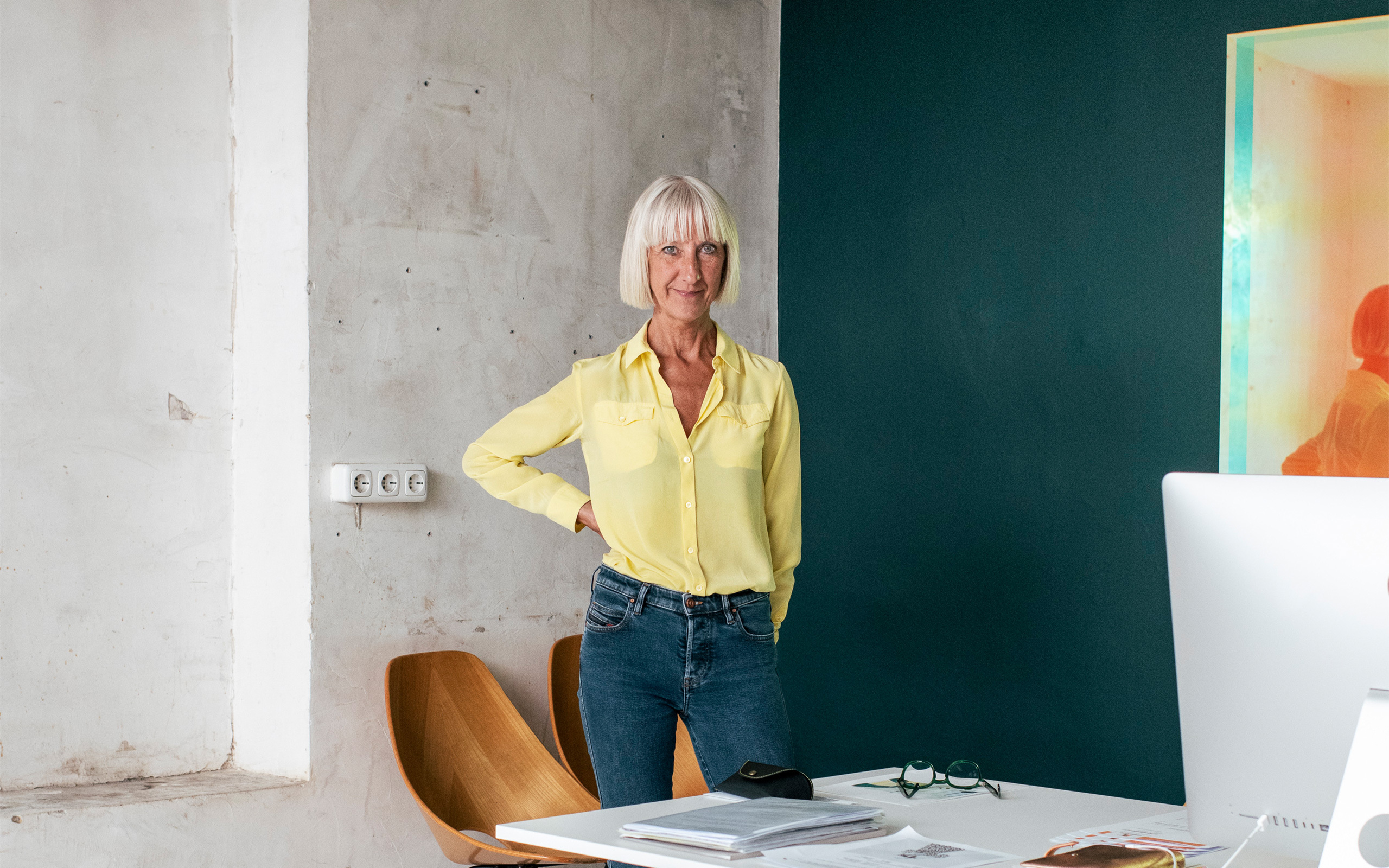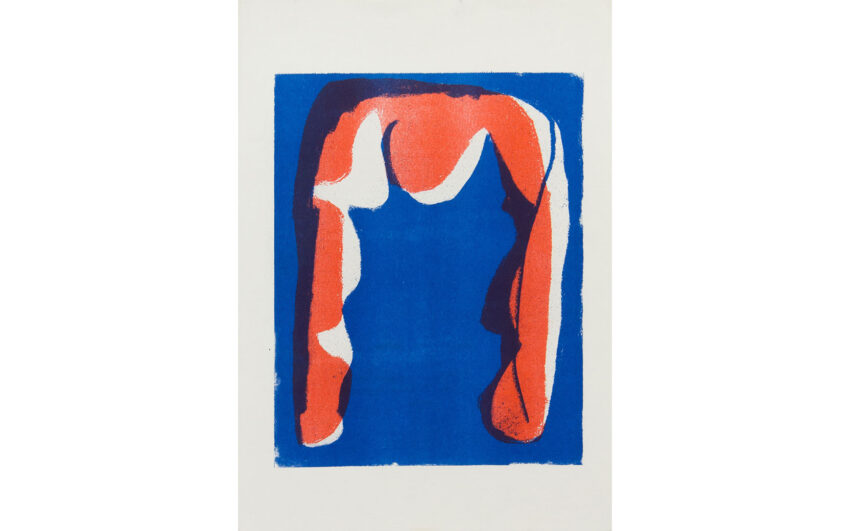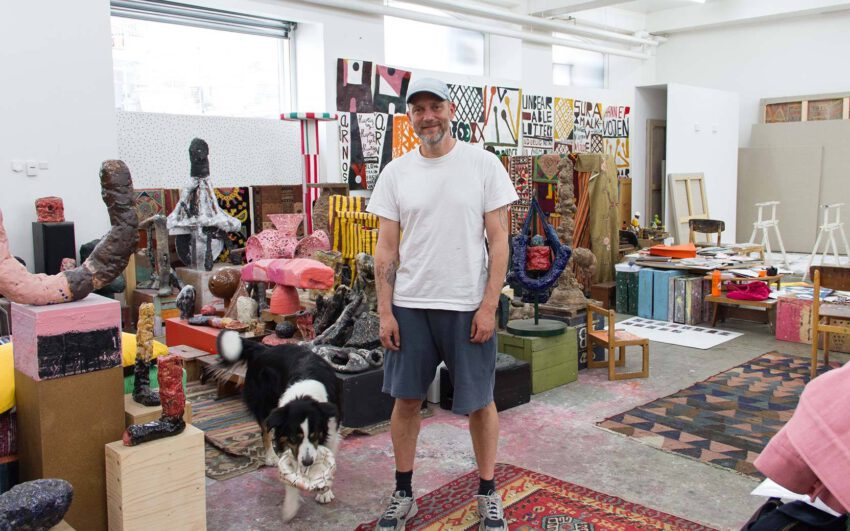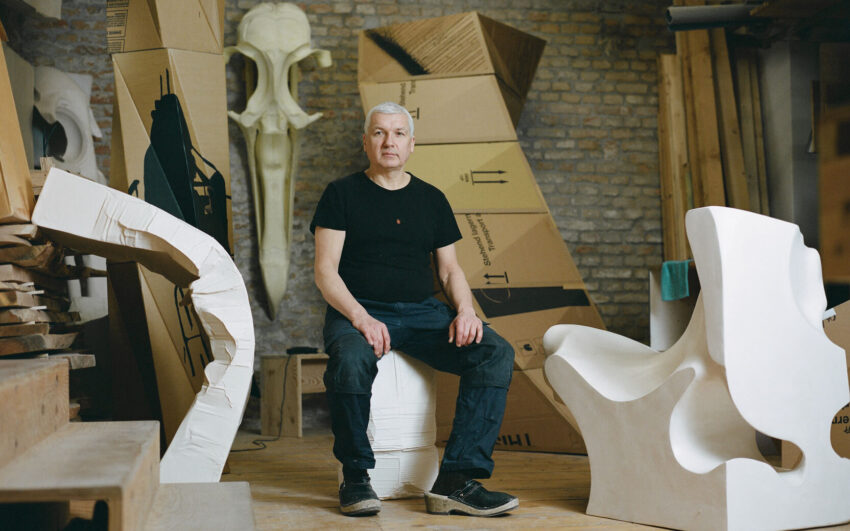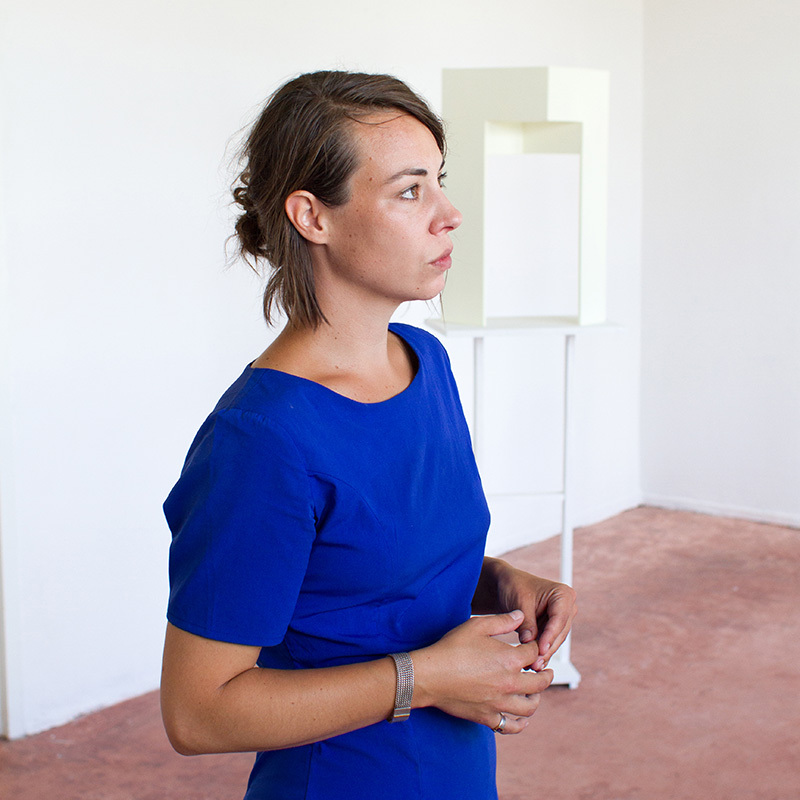Regine Schumann, who lives in Cologne, creates light objects made of acrylic glass that shine as soon as light energy is added to them. For her, art is not a spectacle. She is more concerned with the positive and meditative effect of art on people. We talked to her about her intricate path to art, her current projects and the need to always stay artistically with herself.
Regine, how did you come to light art?
By chance! While visiting the painter Ingo Meller, I encountered the material acrylic glass. He had a plexiglass pattern chain lying on his table, which immediately interested me. I played with it, lined up the glasses one behind the other and noticed what I could achieve with this material. I learned that I can work "painterly" with industrial material. The first works were called Doppelblende (1998). Through hole milling in the plates, a third, sometimes fourth color was emerged. This was followed by further planar works with several plates arranged side by side, which changed in color depending on the perspective from which they were perceived.
Was it immediately clear to you that acrylic glass is "your" material?
Yes, it was. I have noticed that I miss the painterly process as a process itself, but also that with such materiality I came up with completely different ideas and solutions. Fluorescent acrylic glass creates a magical attraction, I can sense color with it.
Did you always know you wanted to be an artist?
As a child, I already knew I wanted to be an artist. I was very often on the road with my father and we looked at modern architecture of the 1960s; I learned from him what it means to "go into rooms." For purely rational reasons, I first had to complete a commercial apprenticeship. After my training and my father's early death, the desire grew to do what I really wanted to do. I wanted to study art, regardless of whether I earned money from it or not. It was about finding out what was dormant in me and what was ready to develop. I started to study at the HfK Braunschweig, a very formative time.
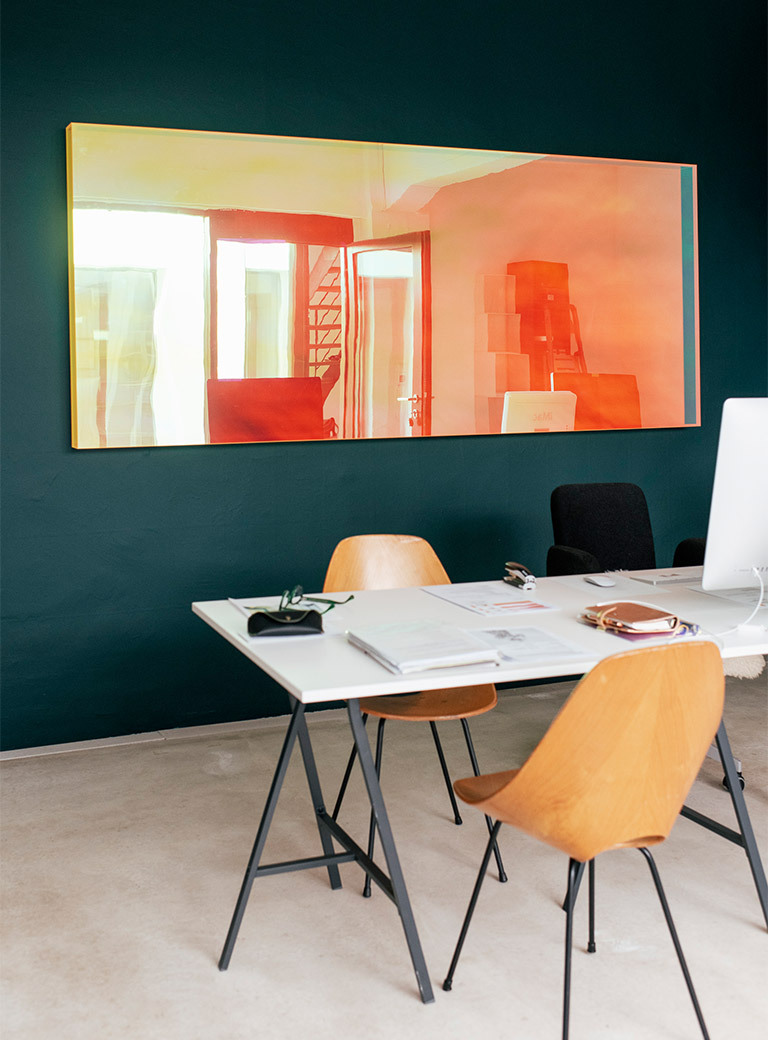
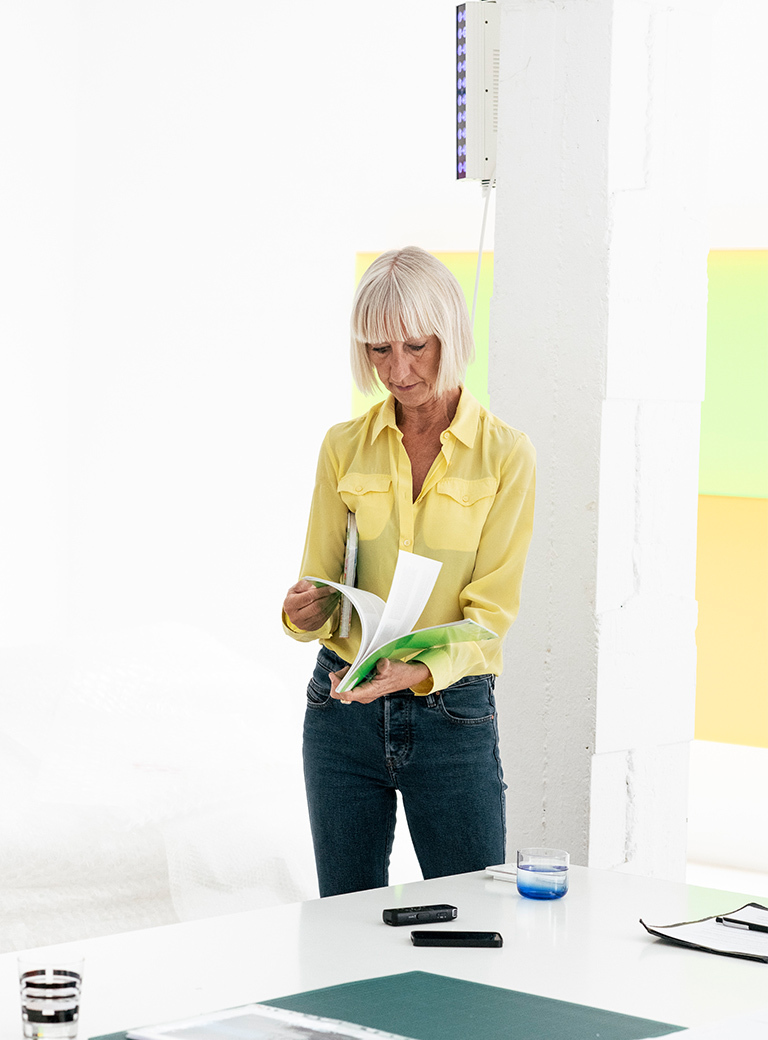
You studied painting; today you work with light. How did the change come about?
I started my artistic education with painting. At the Hochschule für Bildenede Künste in Braunschweig (HfK) the painting techniques that were taught there were primarily figurative and academic. For my part, I loved Matisse and found it fascinating how simply he created a dream composition, with three colors layered on top of each other. However, that didn't correspond to the teaching guidelines of my professors, but it did to those of my own. A 'right' or 'wrong' wasn't acceptable to me; I didn't want to be satisfied with the professor's "that's how it has to be." I think in art nothing has to be "any specific way." Everything is open, and depends on what you want or what seems to be the right form for the right idea. Then I discovered Rupprecht Geiger, who in my opinion had created something that absolutely met my inner need: color that develops an intense and high radiance and, at the same time, flows in a calm formal language. At that point, I realized that there was nothing that could have been added to it, it was so good, I didn't need to think any further. Through his art I got to know the great light artists.
Who are you thinking of?
I certainly I think of James Turrell, but also of Keith Sonnier and Robert Irwin. I met these artists relatively early through Michael Schwarz, the Dean of the HfK, who also taught art history at the university.
In 1989, you went to Rome on a DAAD scholarship where you studied fresco techniques. What changed in your artistic work after this stay in Italy?
I loved my brushes, the oil paints, the smells, everything, and I wouldn't have imagined that I would ever work in the technique I am working in today. However, I had still been searching for 'my way'. Restorer Cinzia Milana, who worked at the Vatican, taught me fresco technique. Working in rooms fascinated me, yet something was still missing. As I was meandering through the streets of Rome with their many fabric stores, I discovered a fluorescent orange bikini fabric on a roll in one of the stores. I was enthusiastic about the material and bought the entire roll not having a clear idea of what I would do with it.
And what did you end up doing with the bikini fabric?
I was invited to do an exhibition in the water tower in Vlissingen, where there was only one room to play with: I took the bikini fabric, zipped it and stretched it over the existing pairs of columns in the room. You can change rooms immensely with a soft materiality and with color. Working with luminous, elastic fabrics has answered many elementary questions for me. The acrylic glass patterns in Ingo Meller's studio were the next step.
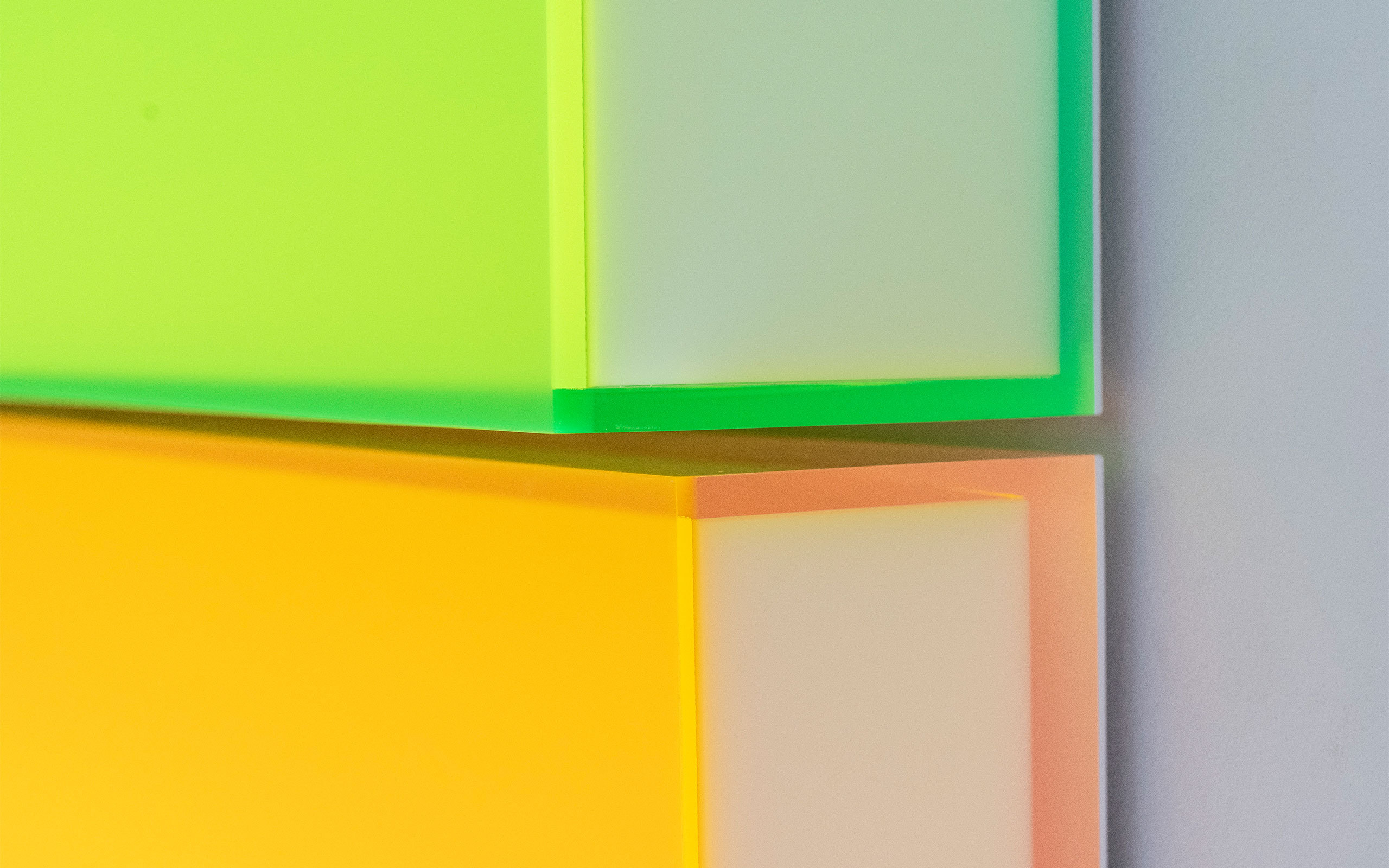
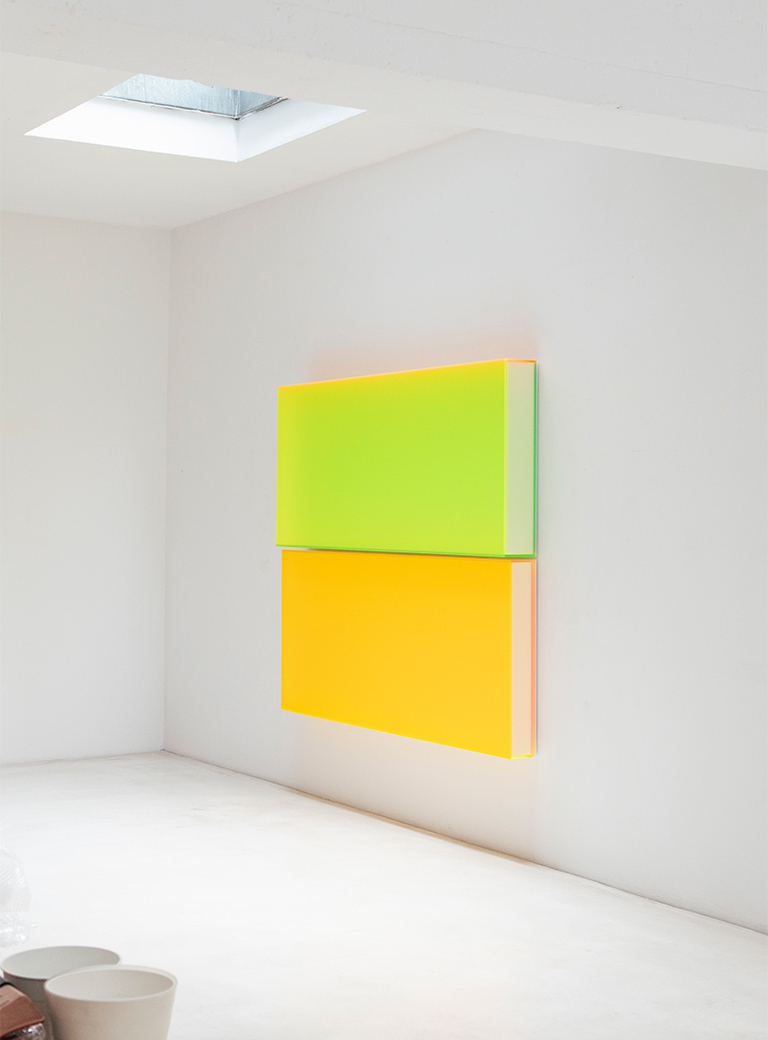
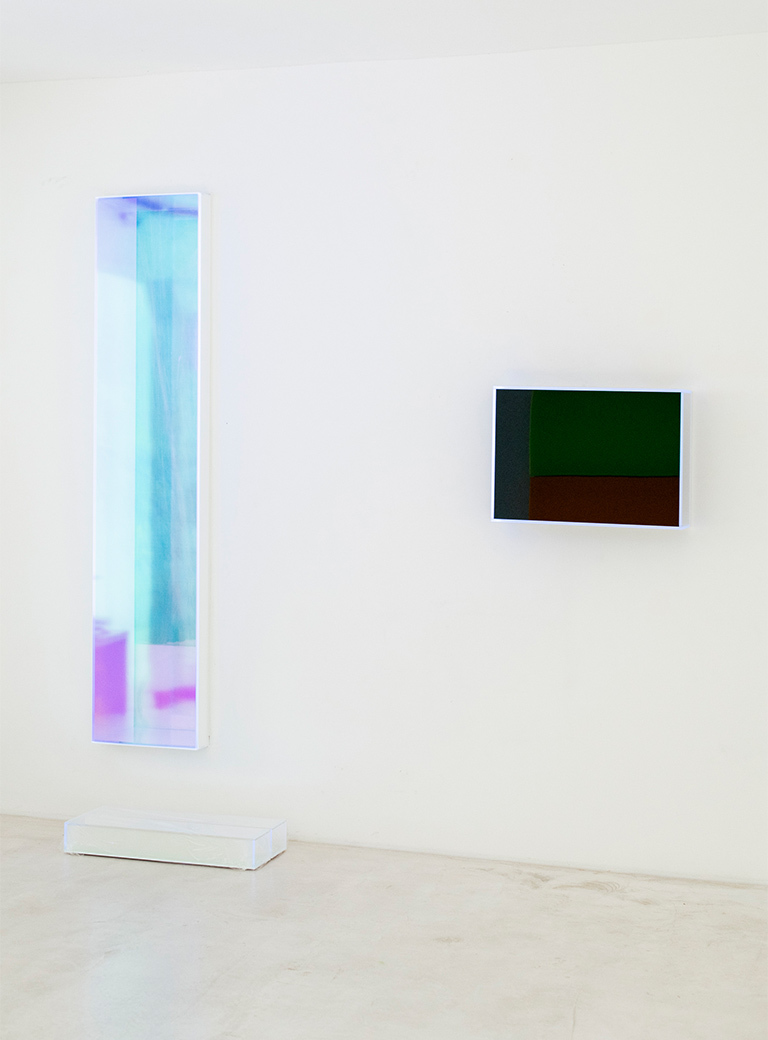
How exactly does your work process operate today?
My work begins with a classic sketchbook, with very small drawings by which I record my ideas. Then I take sample plates and try to find out which constellation of the plates achieves the light effect that matches my sketch. Then I make an order sketch for the production company where the color plates are cut by laser, assembled and polished according to my specifications. When they are ready they are hung in the studio and checked under various light conditions to see whether they have the color and light effect that I wanted to achieve. Also, although some works can weigh up to 140 kilos, it is very important that they appear light.
You use colored and fluorescent acrylic glass in your work. As soon as energy is supplied to this material in the form of light, it begins to shine. How exactly does it work?
Fluorescent pigment always has the property of glowing on its own. It is an industrially manufactured product that is poured into transparent acrylic. The acrylic and pigment grains are mixed together and poured as a viscous liquid onto a metal plate. Due to the oxygen content, the material hardens into plates. The fluorescence of the plates then appears, as in a glass plate, especially on the edges in appearance. Depending on how many parts fluorescent elements are used in the manufacturing process, the brighter the surface of the plates. Depending on the light, the fluorescence emits a different glow. The blue light sources of black light activate the fluorescence very intensively.
In which light do you like your work the most?
It depends a lot on the space. If it is a daylight-flooded space I would not think of darkening it to show my work with black light. The most exciting thing for me is the transformation process. Of course, my works are particularly spectacular in black light. The special feature of my work lies in the many levels that are reflected within the objects without causing them to radiate a sense of restlessness, but rather to project a certain sense of peace and stability into the space.
How do you differentiate yourself from other light artists like Jenny Holzer, James Turrell, and Olafur Eliasson?
In a space by James Turrell or Keith Sonnier, the light remains static. You enter the space and the effect, as in a painting, is that the work itself does not change, rather it is captured in a specific situation. Jenny Holzer always has a political message, that’s not the case with my work.
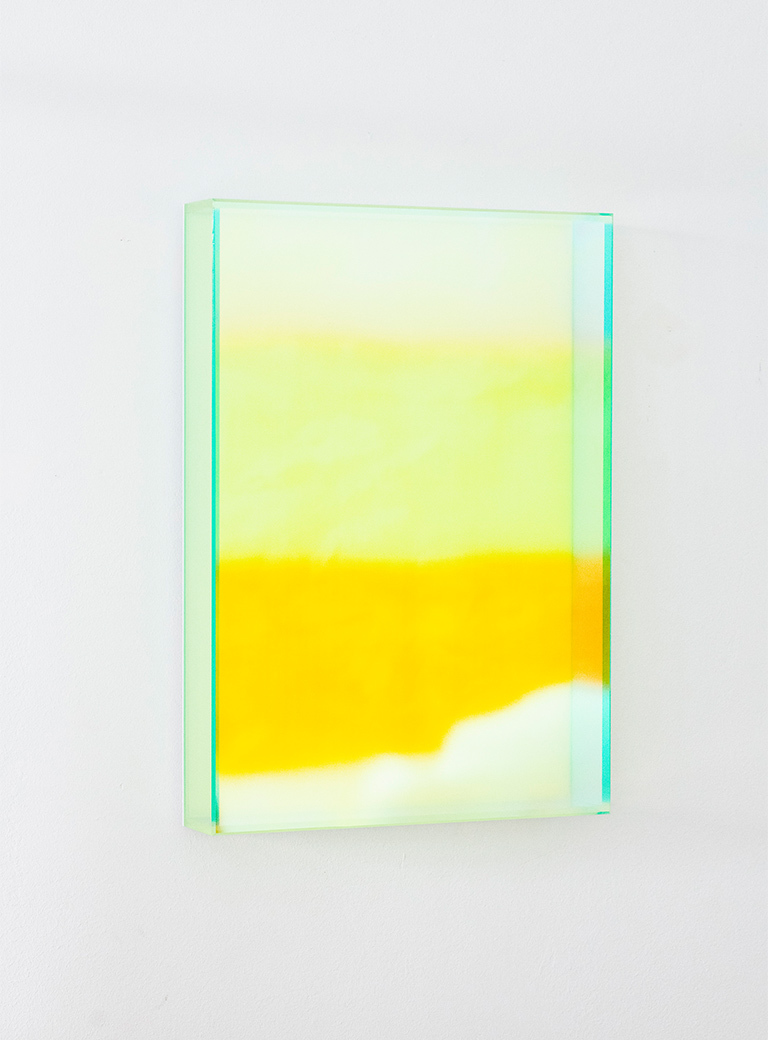
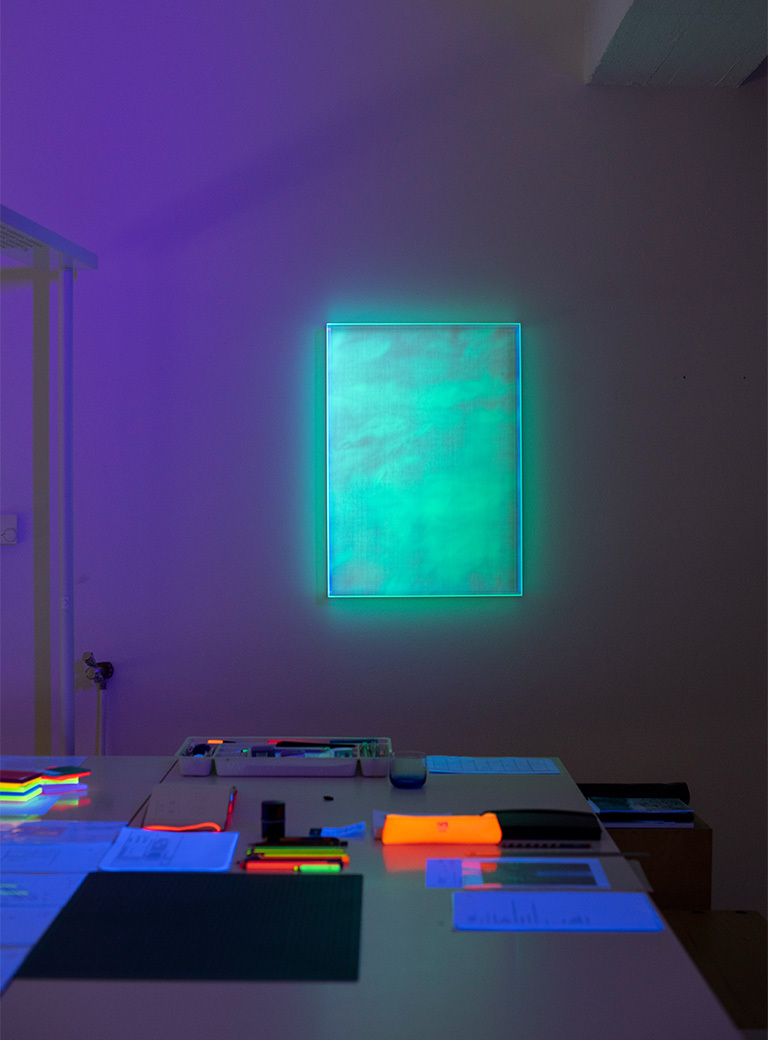
But is there a message you want to communicate with your work?
Of course! Nothing we have or do has only one face. The wealth consists precisely in the fact that there are many facets to consider. I want viewers to become more aware of themselves and to feel free. If I change the light that falls on the work so that the entire space is flooded with pink light, for example, then it affects me as much as the viewer. It is a fascinating experience to allow oneself to be changed by external light and color effects. That is what I want to achieve: to confront reality with elements of beauty and purity. Many people who own my art say even after several years: “Your art is good for us.” I consider that a very nice compliment and it is very important for me as a statement and for the common thread that runs through my work.
Did you find it difficult to assert yourself with your positive and world-oriented artistic position against an often cool and rejecting art scene?
No, it was not hard for me because I felt quite alone with this position. In the 1980s, everything that possessed or conveyed beauty was a “no-go”. I always wondered why, as a serious artist, I was allowed to be and to work in only one or another way, and why should art not be beautiful? I considered it one of my tasks to break through this concept. Today, the understanding of art is more open. There must be no limitations in art.
There are quite obvious references in your art, to the work of the color field painters of American Abstract Expressionism such as Mark Rothko, Ad Reinhardt, and Barnett Newman. How would you locate your work art historically?
These painters and their art have influenced me a lot. Their work was important to me because of their radicalism, their formats, and their clarity – that came incredibly close to my inner need. Clarity of form gives the color enormous space. I have seen many of their original paintings, including the Rothko works in the Rothko Chapel in Houston, Texas. When I entered it, I initially found the paintings very dark, only with time did they become increasingly more colorful. It was an incredible and inspiring experience. I appreciate Rothko’s paintings very much, they radiate something metaphysical, an atmosphere, you stand in front of the painting and sink into it.
Your art is very successful internationally. You work together with international galleries. Is your work influenced by the art market?
I am more than allergic to comments like “Regine, this or that work is good for sales, make five more of them.” I refuse such requests. I experiment with concepts that interest me and not with what the art market wants. As an artist you have to stay close to yourself. It is a very fine line and not easy, but if your art is oriented towards the market and in the worst case you produce only art on demand, you lose your inner thread. And my work would become a design product that can be reproduced at will.
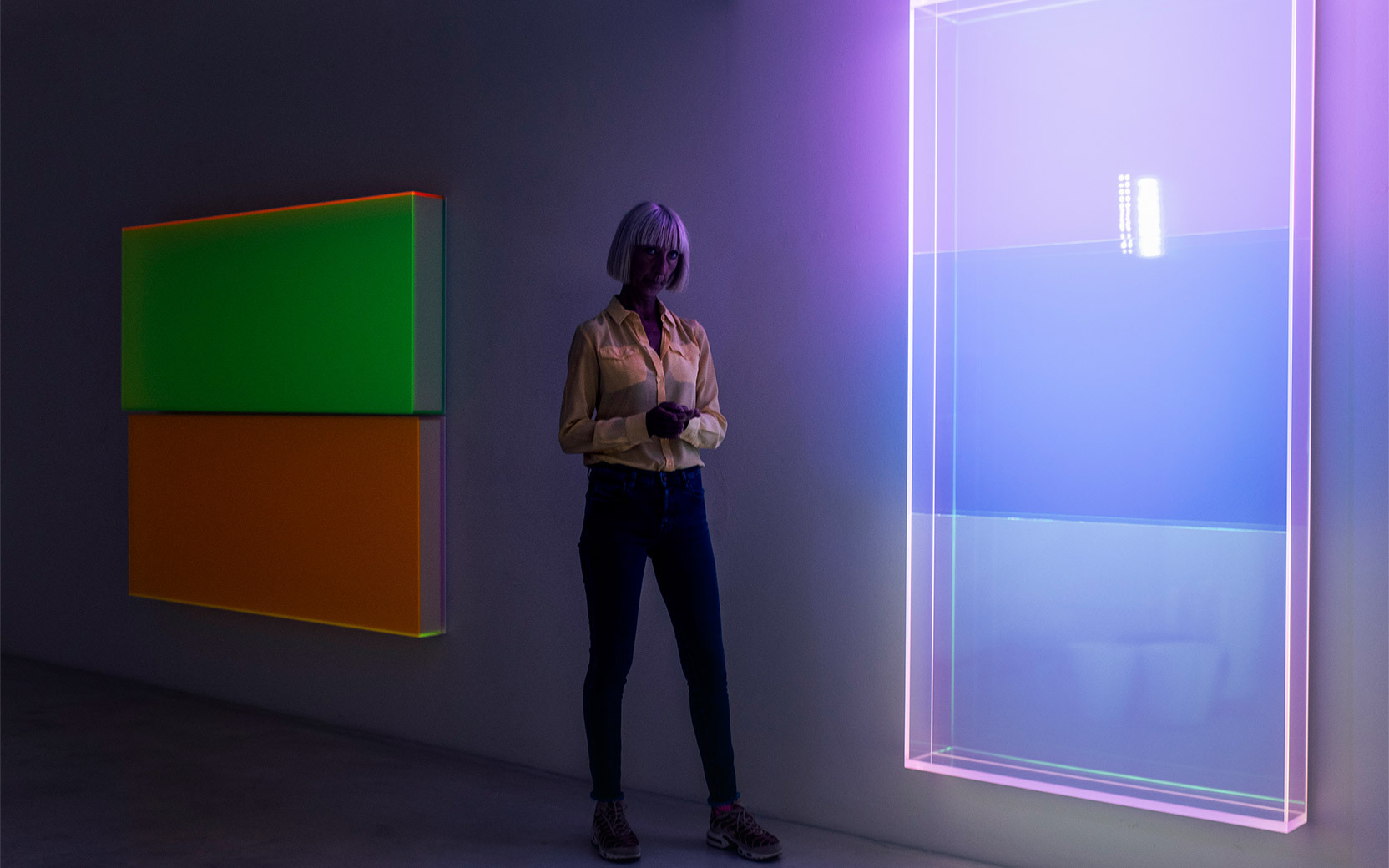
How do you locate your art in the present?
It is very important to me to work with a material that offers me my presence. Each time window offers a new perspective. If I create art today, I am here to address the questions of classical sculpture. It is all “now”. I also consider this my principal task. What can I do with things “today”? And how does it affect people today? Through the painterly feeling and experience, the viewers become part of my artwork, their reality and presence is changing.
Which artistic issues are you currently working on?
I have begun to create a kind of light composition in my works, as they could be seen for example in the exhibition “Goethe. Transformation of the World” at the Bundeskunsthalle Bonn. You sit in front of my work and see that what was just red is turning into an orange-red, and what was blue is changing into a violet, flowing and very slowly. Up until now, I have switched on the black light in exhibitions only when it was dark. However, in the exhibition with Judith Andreae in Bonn I went a step further and lit the pieces individually as if with a piece of music, illuminated by a mixing desk. Occasionally, this may hurt the eyes when the light changes very quickly, almost stroboscopically. I will continue to work on this active new process. I also work on the combination of acrylic glass with fur. However, I only show the work, when I am entirely satisfied with the result.
Do you consider yourself a sculptor or a light artist?
I have difficulties with such limiting categorizations. Whenever I think more about one category, I slip into another one again. It was the same with painting: through painting I came to light art and through my objects to questions of classical sculpture. It all goes together for me. Most people see me as a light artist, but they are limiting themselves in this respect. I do not wish to fit into such limiting categories. This also addresses the question of where I want to go. I am 58 now, I’m no longer 30! I’ve solved a lot of the questions I’ve had, nevertheless, I still have the feeling that I am at the beginning!
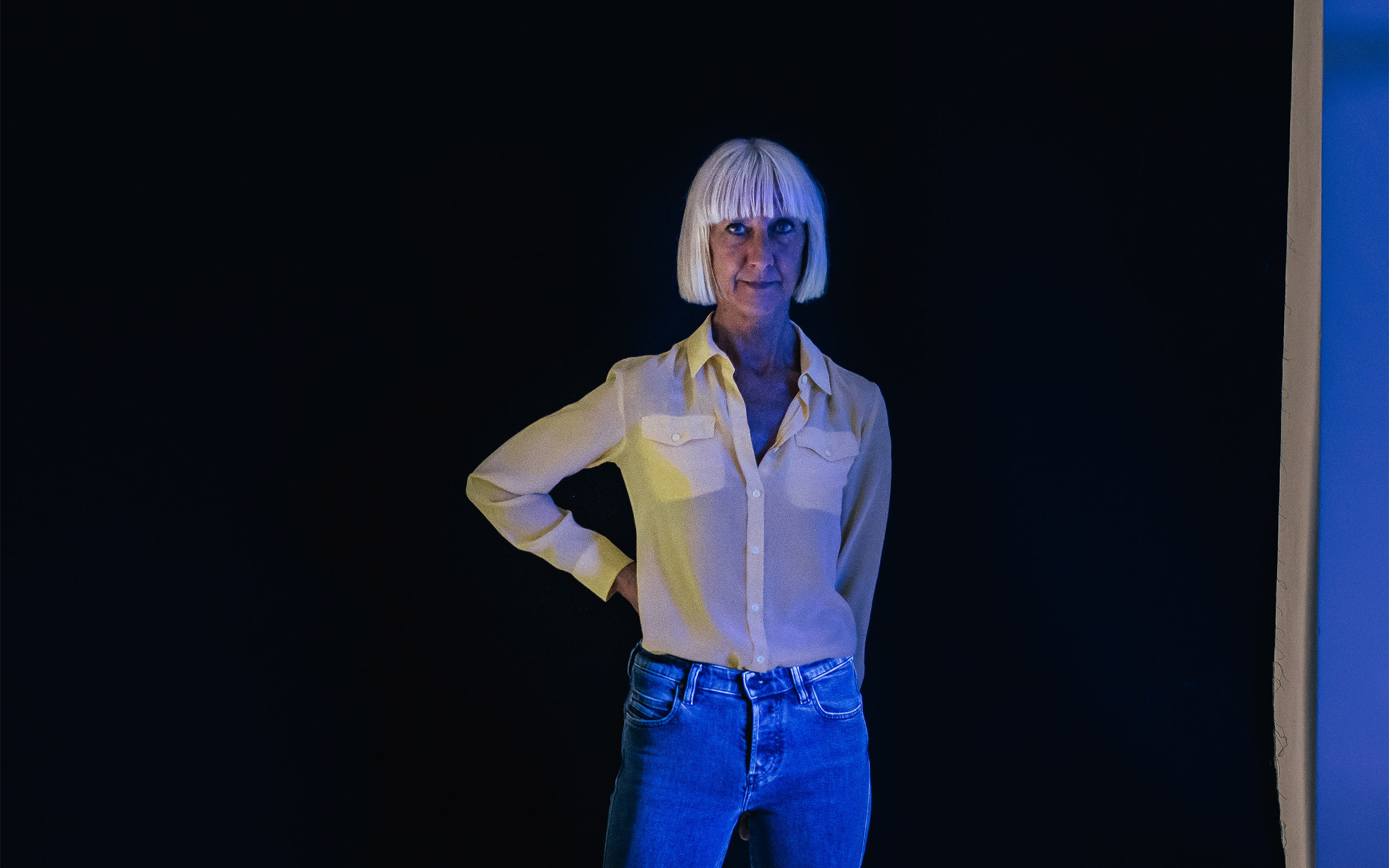
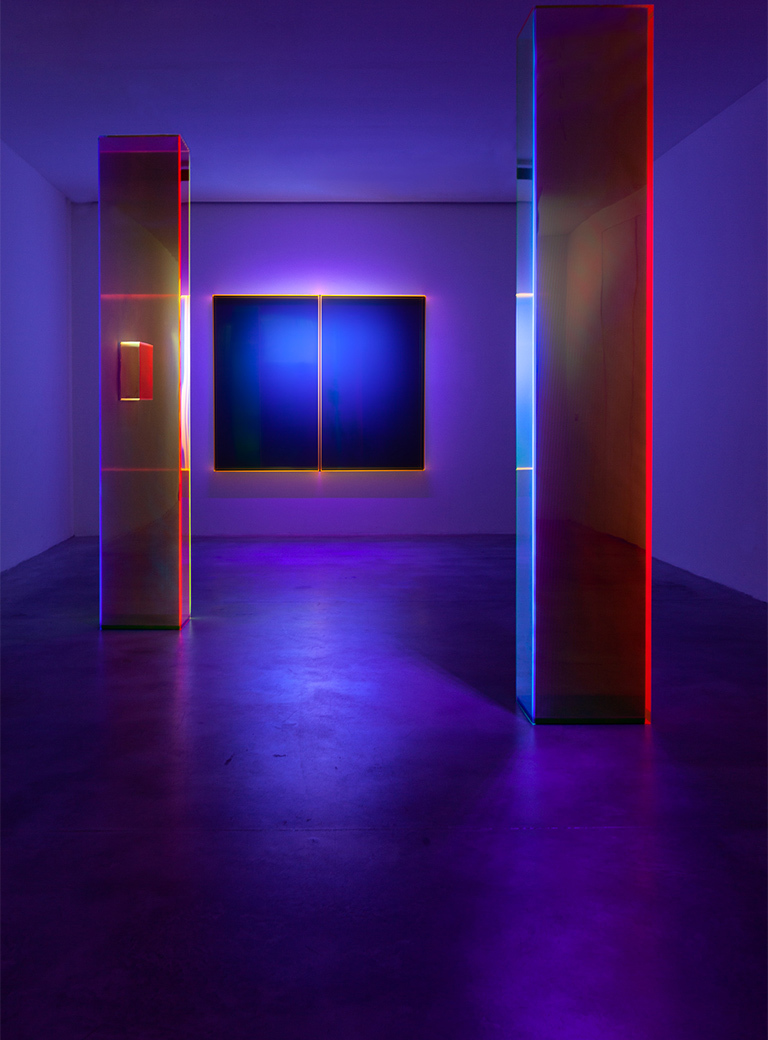
Installation view: Regine Schumann, colormirror, Dep Art Gallery, Milan 2018
Courtesy: the artist and Dep Art Gallery, Milan
Photo: Alessandra Ianniello
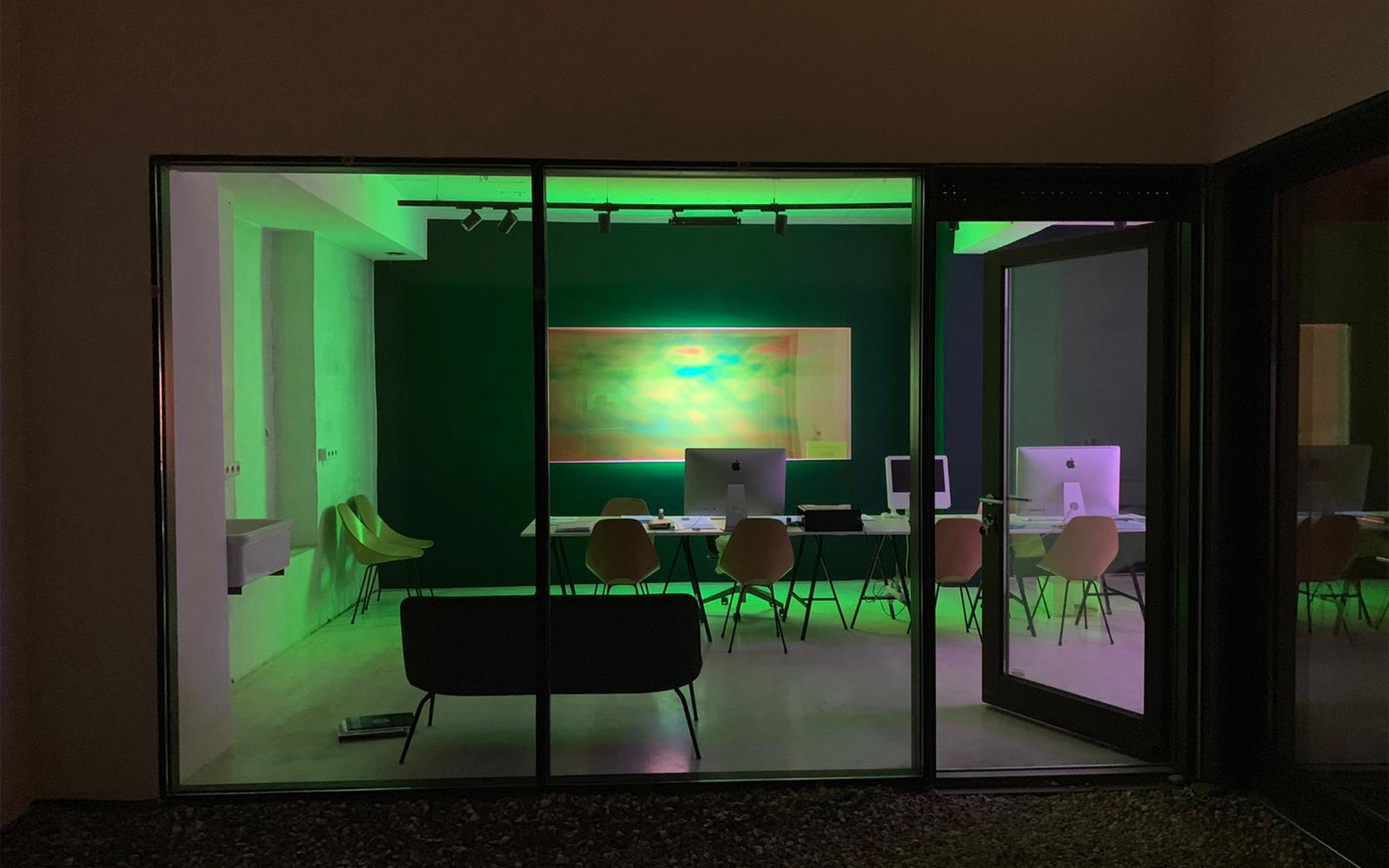
Installation view: Studio Regine Schumann, Cologne 2019; Courtesy: the artist
Photo: Eberhard Weible
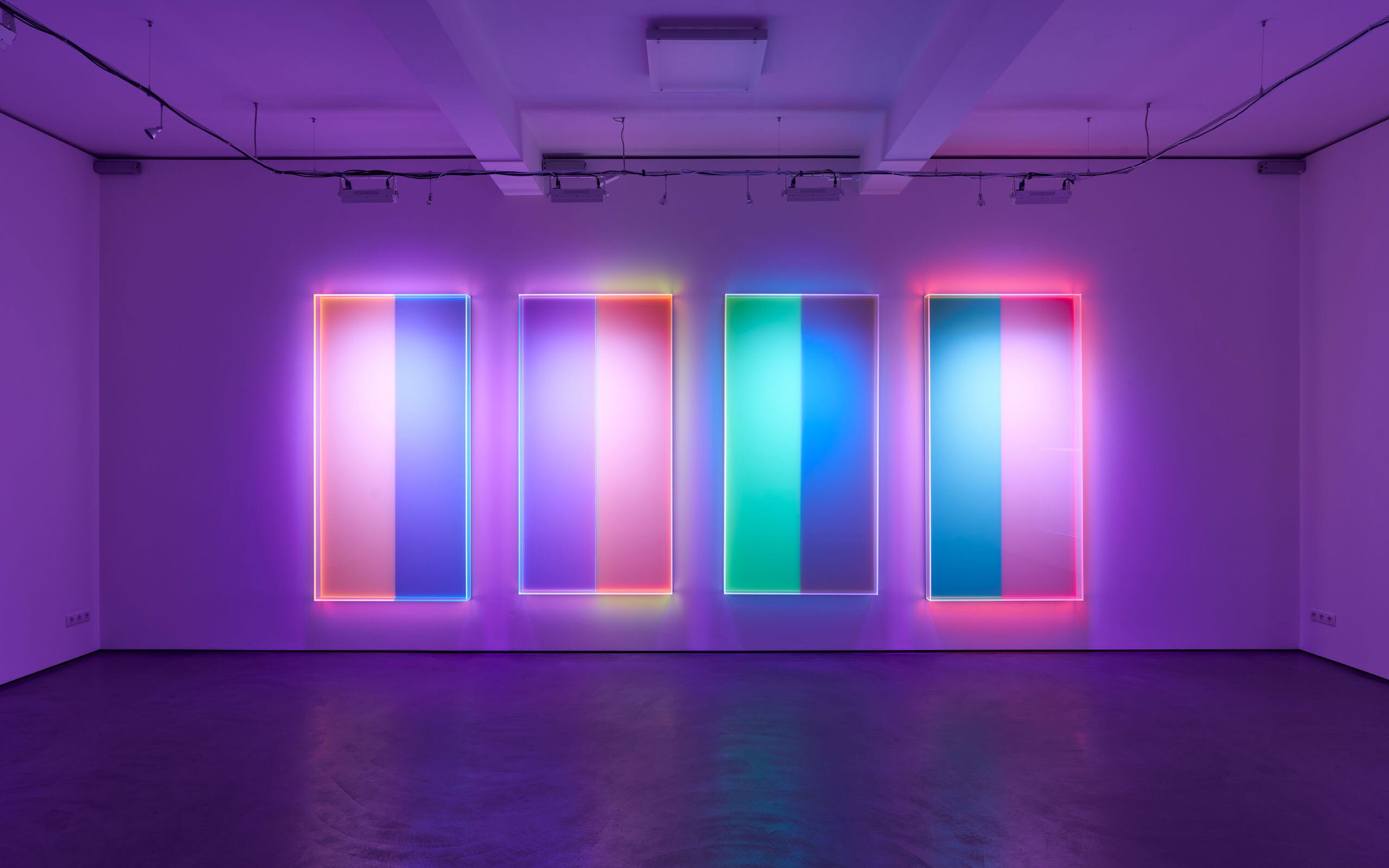
Installation view: Regine Schumann, feel color, Galerie Judith Andreae, Bonn 2019
Courtesy: the artist and Galerie Judith Andreae Photo: Ben Hermanni
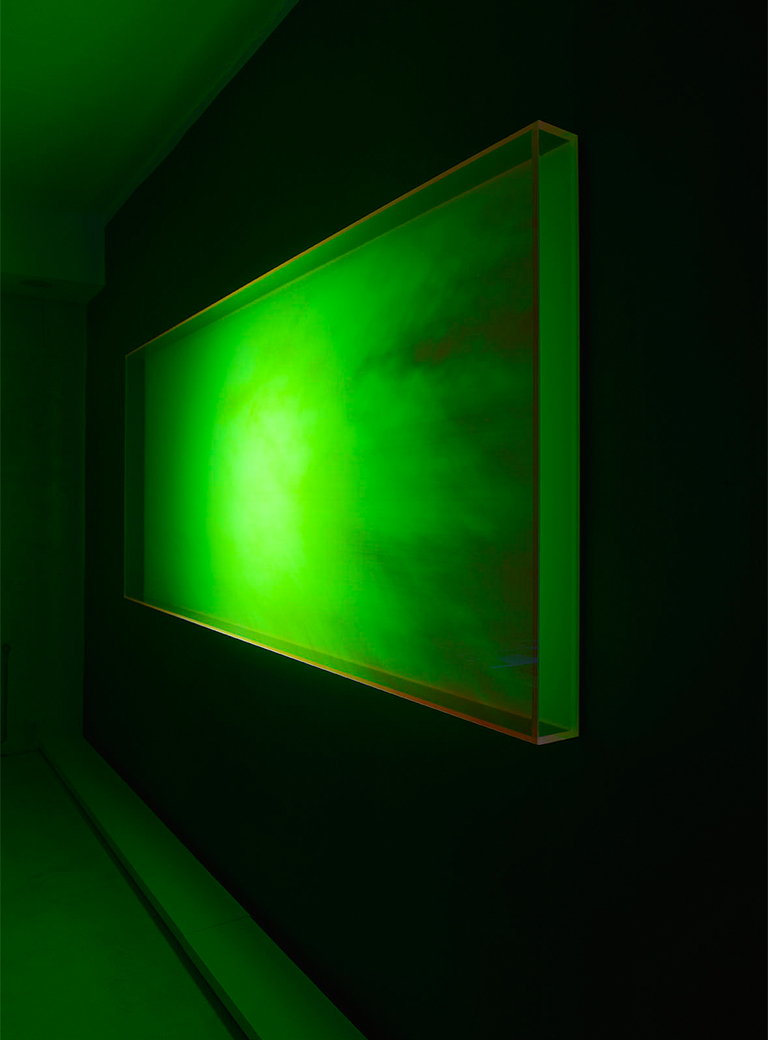
Installation view:
Studio Regine Schumann, Cologne 2019; Courtesy: the artist
Photo: Eberhard Weible
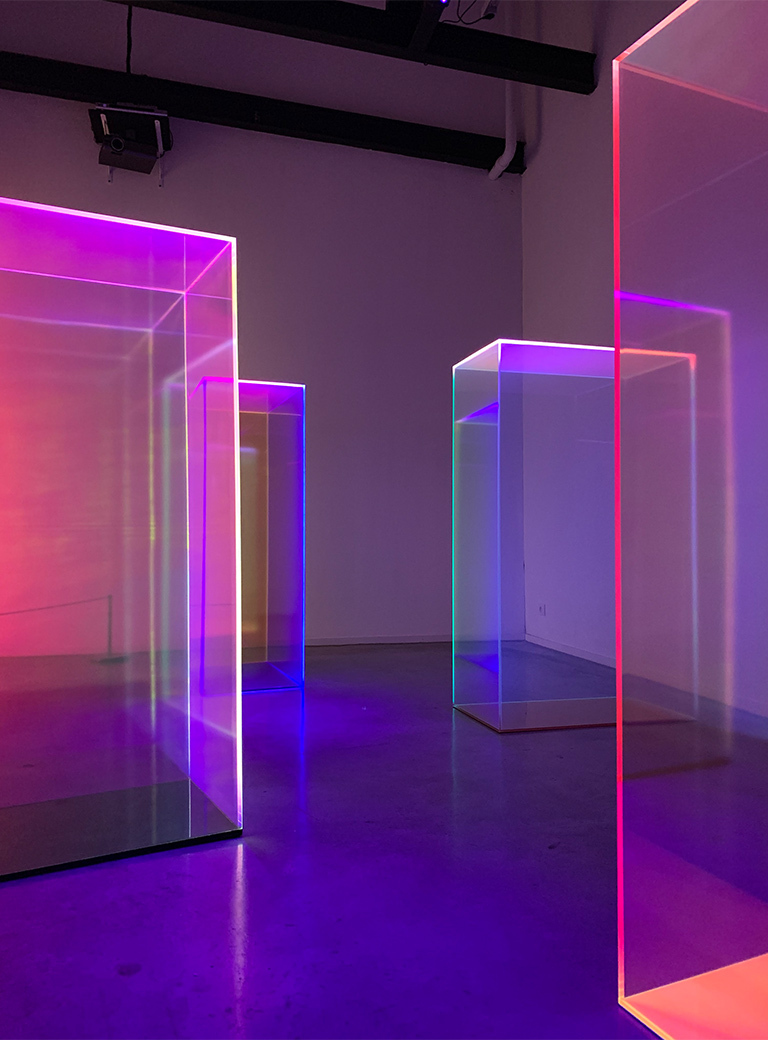
Installation view: Vanhaerents Art Collection, Bruxelles 2019
Courtesy: Vanhaerents Art Collection, Bruxelles 2019 Photo: Joost Vanhaerents
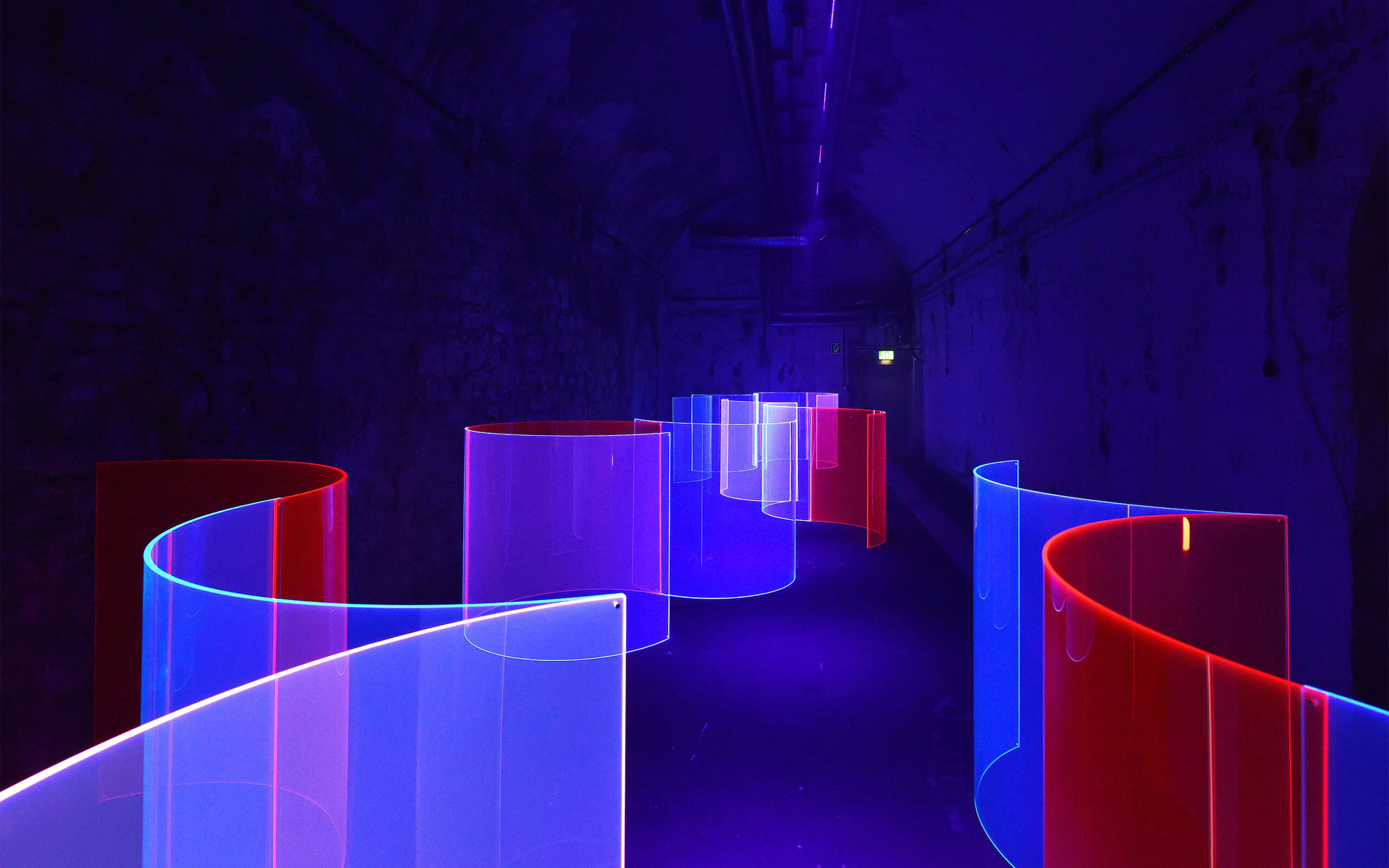
Installation view:¡DARK! + Dark II (two, too), Zentrum für Internationale Lichtkunst, Unna 2015
Courtesy: the artist and Zentrum für Internationale Lichtkunst, Unna 2015
Photo: Frank Vinken


